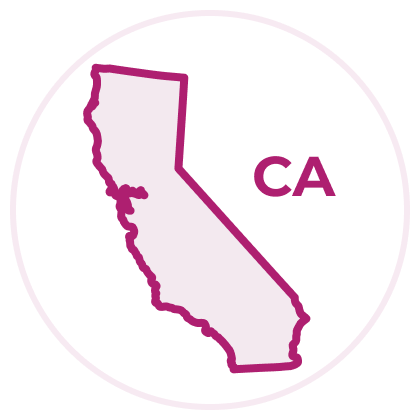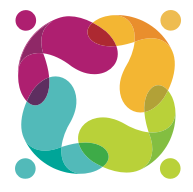Pre-Service Training
Pre-service training for resource parents is offered by counties through two modalities: 1) community colleges for foster parent training, and 2) Foster and Kinship Care Education provided through an online vendor. In addition, counties can provide their own training.
The California Department of Social Services (CDSS) established the Resource Family Approval (RFA) process that must be followed by each county, which includes an array of requirements, one of which is training. RFA requires prospective foster, adoptive, and guardianship caregivers to complete a minimum of 12 hours of pre-approval training, plus CPR/first aid training. Counties can choose how to provide the training and with whom, using a variety of curricula as California does not have a universal training. Instead, CDSS contracts with the Foster Parent College, which counties may use to offer training to their families.
CDSS has outlined a number of requirements for pre-approval training that counties must include. The requirements include (but are not limited to) the following:
- An overview of the child protective and probation systems
- The effects of trauma, including grief and loss, and child abuse and neglect, on child development and behavior, and methods to behaviorally support children impacted by that trauma or child abuse and neglect
- Positive discipline and the importance of self-esteem
- Health issues in foster care
- Accessing services and supports to address education needs, physical, mental, and behavioral health, and substance use disorders, including culturally relevant services.
- The rights of a child in foster care and the resource family's responsibility to safeguard those rights, including the right to have fair and equal access to all available services, placement, care, treatment, and benefits, and to not be subjected to discrimination or harassment on the basis of actual or perceived race, ethnic group identification, ancestry, national origin, color, religion, sex, sexual orientation, gender identity, mental or physical disability, or HIV status
- Cultural needs of children, including instruction on cultural competency and sensitivity, and related best practices for providing adequate care for children or youth across diverse ethnic and racial backgrounds, as well as children or youth identifying as lesbian, gay, bisexual, or transgender
- Basic instruction on existing laws and procedures regarding the safety of foster youth at school
- Permanence, well-being, and education needs of children
- Child and adolescent development, including sexual orientation, gender identity, and expression
- The role of resource families, including working cooperatively with the child welfare or probation agency, the child's family, and other service providers implementing the case plan
In cases of emergency placement, the training may be completed after placement.
Services Offered Through the State’s Post-Permanency Support Program
In California, guardianships established through the juvenile dependency system may be eligible to receive Kin-GAP.
The Kin-GAP program is a permanency option for children in long-term placement with relatives, which provides a monthly payment to the relative guardian. This program is intended to enhance family preservation and stability by providing relatives with an alternative route to permanency when reunification and adoption are not appropriate permanency options. The transition from foster care or wardship to Kin-GAP is not automatic. Once the requirements are met, the social worker will complete the paperwork for enrollment into the program.
Kin-GAP is generated by the county and is provided if eligibility requirements are met.
The Adoption Assistance Program (AAP) is an entitlement program to provide financial and medical coverage to facilitate the adoption of children who otherwise would remain in long-term foster care. The Adoption Assistance and Child Welfare Act of 1980 created federal incentives to encourage the adoption of special needs children. The California State Legislature created the Adoption Assistance Program with the intent to provide the security and stability of a permanent home through adoption. AAP-eligible children may receive federally funded benefits or non-federally funded benefits per state guidelines. The request for AAP benefits, the eligibility determination, benefit negotiation and execution of the AAP agreement must be completed prior to the adoption finalization.
AAP is designed to ensure all children adopted from child welfare receive some financial assistance and services regardless of the adoptive family's income. The state's role is to provide guidance related to AAP. Individual counties make final decisions related to AAP; however, will seek clarification from the state especially related to child need and subsidy amounts. The state will occasionally get involved directly, especially regarding children with complex care needs that require involvement of departments outside of child welfare to assist a family.
The below AAP benefits are available to all AAP-eligible children:
- Monthly negotiated rate
- Medical coverage (Medicaid/Medi-Cal)
- Reimbursement of nonrecurring adoption expenses (up to $400 per child who is adopted)
- Payment for eligible out-of-home placement
- Payment for eligible wraparound services
The AAP benefits may continue:
- In a subsequent adoption
- Regardless of the adoptive family's state or country of residence
- To age 21, if eligible
Post-permanency services are provided by individual counties and vary significantly by county. Some counties provide services directly, some counties contract with organizational providers, and other counties do a combination of both.
CDSS also contracts with organizational post-permanency providers on behalf of counties that use CDSS Adoptions Regional Offices for the adoption process.
California is in the process of updating the following website with information about agencies that provide post-permanency services by county: https://capostadoption.org/directory/. (The list of post-permanency services is updated periodically and may not include all services available.)
In California, there are some critical services that adoptive and guardianship families can use that are offered outside the child welfare system. All AAP-eligible children are also eligible for Medi-Cal/Medicaid and may be eligible to receive a range of services under the California behavioral health systems of care, most notably through CalAim (California Advancing and Innovating Medi-Cal), a multiyear initiative through the Department of Health Care Services (DHCS).
Geographic Area Covered
Specific post-permanency services that are offered vary by county. Adoptive and guardianship families across the state are eligible for services; however, not every county will have access to these services throughout their entire county. The state is seeking to ensure more equity in services offered throughout the state. More rural counties and more rural areas within a county tend to have fewer services available for families.
Eligible Population for the Overall Post-Permanency Program
Variations in Eligibility for the Post-Permanency Program
See variations outlined in the Eligible Population for Overall Post-Permanency Program section above.
Outreach and Engagement
The state does not require a certain type of outreach. Outreach varies by county and by service provider.
How the Post-Permanency Program Is Operated
Adoption/Guardianship Assistance/Subsidy Review and Changes
Adoptive parents may request a change in the adoption assistance agreement at any time. Adoptive parents may submit their request in person, by phone, or by writing to the responsible public agency (county or CDSS Adoptions Regional Office). No form is necessary to request a change in the adoption assistance agreement; however, parents may be asked to provide information and documentation to support their request. There are no standard AAP reviews that take place. However, parents may renegotiate the AAP rate at any time upon their request.
There is no standard review for guardians who receive payments; however, home visits occur every six months.
Tracking Adoption/Guardianship Discontinuity
CDSS has issued guidance to county agencies regarding how to report on disrupted or dissolved intercountry adoptions using the state's child welfare management system.
Post-Permanency Program Spending (FY 2023)
Information not available. Because California is county-administered, each county uses their budget to provide post–permanency services
Funding Sources for the Post-Permanency Program (FY 2023)
Funding sources include, but are not limited to, the following:
- Title IV-B, Part 2 (Promoting Safe and Stable Families/PSSF)
- Adoption savings (reported on CB 496 Part 4 – Annual Adoption Savings Report)
- Adoption/Guardianship Incentive Program Payments (AIPP)
- County funds


